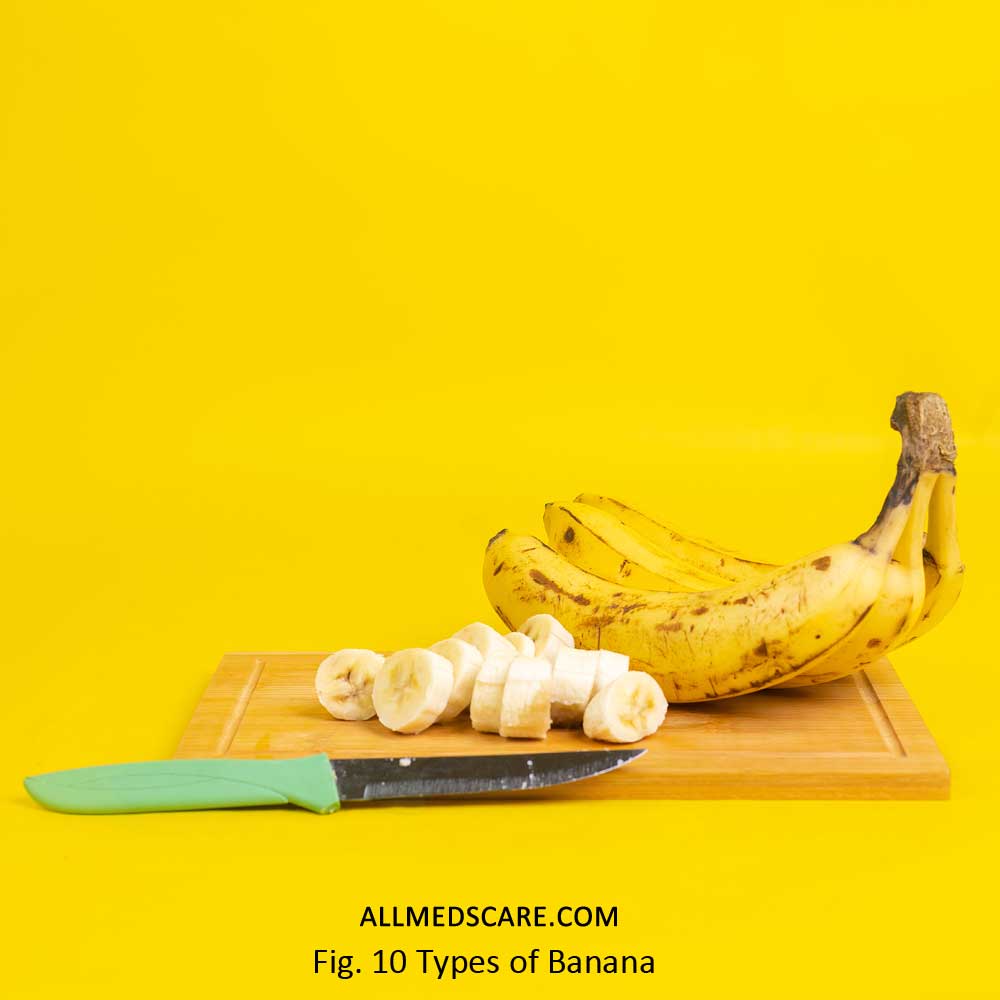
Banana-10 Types with Amazing Benefits
Banana is one of the famous and favorite fruits, lots of people like to eat this fruit. This fruit is used in several dishes and recipes. Most bodybuilders never skip eating this fruit. Many people also take this fruit in the form of juice, milkshakes and snacks.
The fruit is based on the Musaceae family of flowering tropical plants and this fruit scientific name is called Musa. The mild-tasting and disease-resistant Cavendish type banana is more sold in the U.S. and Europe.
Nutrition In banana
- Vitamin B6
- Fiber
- Potassium
- Magnesium
- Vitamin C
- Manganese
One medium size provides about 110 calories, zero gram fat, one gram protein, 28 grams carbohydrate, 15 grams sugar , 3 grams fiber, and 450 mg potassium.
Types of Banana
Most people are very familiar with eating the yellow color banana, but the fruit have several types. They are
- Banana (Cavendish) – The cavendish banana also mentioned as “dessert banana. This type is mildly sweet when ripe. To taste this type for best flavor, please wait until the peel is golden yellow with a few brown spots.
- Plantain (Green Banana) – This green type color is a little larger in size than ordinary yellow color banana, more starchier, and less-sweet version. Mostly this type is used for cooking. When this fruit is in unripe condition, the tropical regions(Central America, Africa, and the Philippines) people use this type for a variety of dishes in the form of fried, boiled, or baked.
- Red– This red color banana is shorter and plumper than the Cavendish type. A ripe red banana will be creamy and more sweeter than Cavendish. This red type is so tasty when the peel is dark reddish-purple.
- Lady Finger – This lady finger type size is thinner and slightly shorter than the Cavendish bananas. This type is sweeter and eaten raw or as dessert.
- Pisang Raja: Pisang Raja type are popular in the country Indonesia. This type tastes like honey-flavored custard with a smooth and creamy consistency. The average size of pisang raja is four to six inches in length and it is smaller than Cavendish.
- Blue Java: Blue Java are also called ice cream bananas because of their sweet vanilla flavor and extreme creaminess. This type is grown more in the colder region and it’s a little hard. This type peel color is blue and white flesh.
- Manzano: This Manzano type is sweeter than Cavendish type with a little crunchy apple-strawberry flavor. This type is Central America, South America, the Caribbean, and Mexico.
- Burro: One of the most unique types is Burro, because it has a lemony and tangy taste. This type is flatter, smaller and more square shaped than Cavendish. The flesh portion is creamy white or yellow and is soft with some firmness in the center.
- Barangan: This Barangan peel is yellow with small black dots. This type of banana has a sweet and mild taste but not equally as cavendish bananas. The fleshy portion of this type is white and has no seeds. This type is such a familiar variety and liked to be eaten by the desert region people.
- Gold finger: The Gold finger is a pest-resistant, because it was first grown in Honduras by a team of scientists. This type can be cooked when unripe stage and eaten raw once it is fully ripe.
Storage
Buying this fruit is not an easy task, but keeping the fruit in a good storage place is very important one.
- Please store at room temperature.
- Please keep away from direct sunlight.
- Please avoid refrigerating green bananas as this can disrupt normal ripening.
- Those who want to speed up the ripening, just store it in a brown paper bag or place it near ripe fruit, which emits ethylene gas that causes ripening.
- Do not store this fruit in plastic bags as this traps excess moisture and may promote rotting within a few days.
- Banana “trees” or hangers like setup supports to expose a bunch of bananas to an even amount of oxygen, and encourage the ripening steadily by preventing excess pressure and moisture from collecting on the bananas at the bottom of the bunch.
- People can store fully ripe golden yellow bananas in the refrigerator with a sealed produce drawer. Refrigeration will support preserving the flavor for one more week, even if the peels continue to darken.
- If the peel has ripened to a mostly brown color, remove the peel and chop or mash the fleshy portion to include in baked goods or freeze to be added into smoothies.
In several countries, the leaves of this fruit are recycled to use for various purposes such as food wrappers to hold tamales and meats; it is also used to cover or wrap various food items while cooking to help seal in flavor.
The fruit peels contain plant chemicals in the form of antioxidants properties, and have long been used in traditional and folk medicine as an antiseptic and anti-inflammatory to encourage wound healing such as for bug bites, minor burns, and sunburns.
Banana is a good source for phosphorus hence it also helps to maintain bone health. Lots of people are using the inside of the peel as a remedy to press on a wound for several minutes. This will not have any side effects in the external skin layers.






